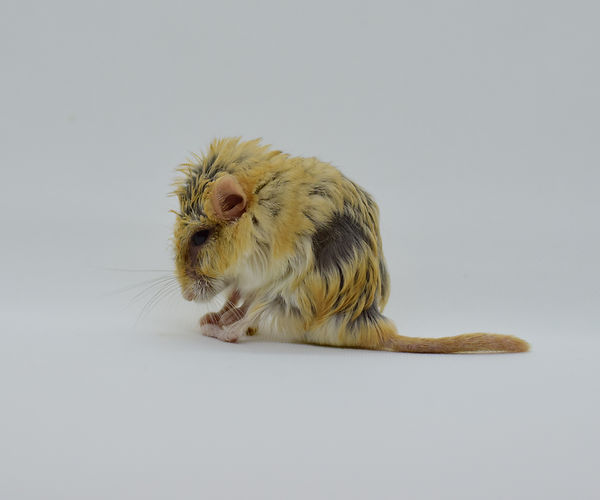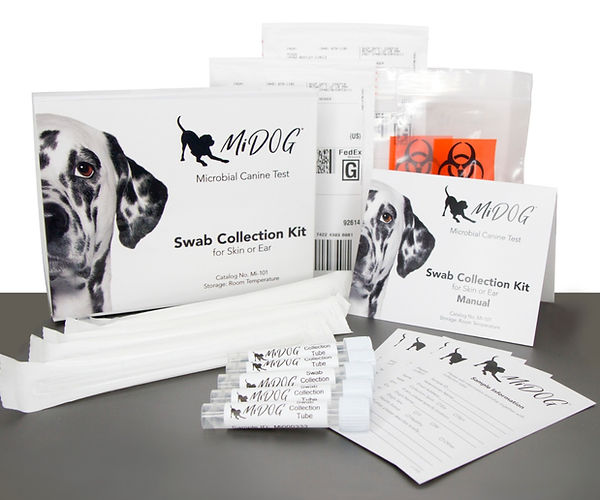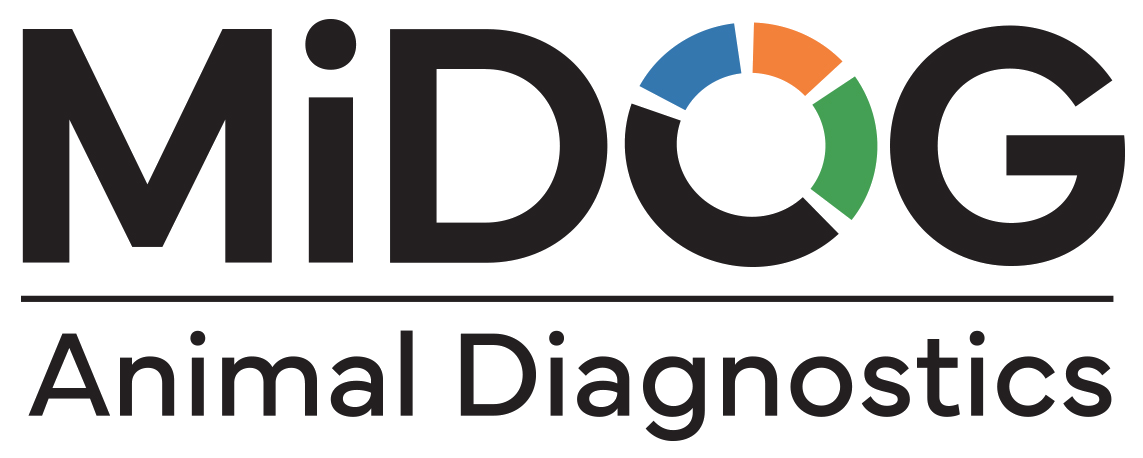
Although it is rare for your pet gerbil to get sick, there is one disease that your furry friend is particularly susceptible to: Tyzzer’s disease (TD). This often fatal disease is one of the most common infections in not only gerbils, but also guinea pigs, rats, hamsters, and rabbits [1]. Rodents such as gerbils are particularly prone to these infections in captive settings because transmission is often caused by improper husbandry [2]. These infections can be challenging to identify and resistant to treatment, and so it is important for any small mammal pet parent to be aware of signs of possible TD cases.
Visiting an exotic pet veterinarian if you suspect your gerbil is sick is always recommended, but especially important when TD is suspected. Notably, gerbils have higher rates of mortality to TD than other rodent species, making early intervention particularly critical for your furry friend [3]. TD is painful at best, and often requires early intervention for effective treatment. Consequently, contemporary diagnostic tools are becoming more and more necessary to give the best quality care to small mammals.
What is Tyzzer’s Disease?
The bacteria Clostridium piliforme is the causative pathogen of TD in gerbils [4]. This pathogen is a Gram-negative, obligate intracellular, spore-forming bacterium, often presenting with lesions in the liver, intestinal tract, and myocardium [5]. When an outbreak occurs, Peyer’s patches may develop within 24 hours of exposure to Clostridium piliforme, with the severity of the disease peaking between the fifth and seventh day if the gerbils survive through this time period [6]. Eventually, lesions are able to resolve themselves, but considering the high mortality rate in gerbils, it is critical to get immediate medical intervention from an exotic pet veterinarian to treat this infection [6]. TD manifestation is often secondary to environmental factors, stress, or compromised immunity. Transmission is often caused by ingestion of contaminated feces, food, water, and/or exposure to the causative pathogen through other environmental means [3].
Clinical presentation of this disease often occurs in young or stressed gerbils, with a history of chronic illnesses increasing the chance of fatality. Moreover, recent research has found subclinical presentations of the disease which they suspect may be very widespread in immunocompromised gerbil populations [7]. This suggests that many gerbils have the propensity to develop severe TD if their microbiome is dysbiotic or they are in a stressful environment. Therefore, it is important for caretakers to know some clinical presentations of TD when symptoms arise. Symptoms include but are not limited to:
- Depression
- Rough haircoat
- Hunched posture
- Loss of appetite
- Dehydration
- Watery diarrhea

he image above depicts a gerbil that is thin and is having hair fall out associated with Tyzzer’s disease.
Preventing Tyzzer’s Disease in Gerbils
Proper animal husbandry is critical to ensure that your pet gerbil has a strong immune system. Environmental factors like unclean cages, improper climate, and more can compromise your gerbil’s immune system and leave your furry pet susceptible to opportunistic bacteria.
Read the Long Island Bird & Exotics Veterinary Clinic Guide here to learn everything you need to know about proper small mammal care.
How to Treat and Diagnose Tyzzer’s Disease in Gerbils
Veterinarians recommend that gerbils visit yearly to ensure the well-being of these difficult to diagnose rodents. In terms of treatment, your exotic pet veterinarian will likely prescribe antibiotics [3]. Additionally, if your gerbil suffered from dehydration, your veterinarian may also give you furry friend fluids and electrolytes. A visit to the vet will also help you identify possible lifestyle changes you and your gerbil can make to improve their quality of life and lessen the risk of recurrent infections. This entails understanding the exact pathogen that is impacting your gerbil, with modern technological advances allowing for more targeted clinical diagnostic interventions.
Diagnosis of Tyzzer’s disease is particularly complex, largely due to the difficulty in identifying Clostridium piliforme through conventional means. Historically, diagnoses of these infections have been based on blood and fecal tests, but these results are often not conclusive. Moreover, “to date, attempts to grow the organism in cell-free medium have been uniformly unsuccessful”, ruling out the ability for veterinarians to use cultures to effectively characterize the organism [6]. No-growth cultures are particularly common in Gram-negative bacteria like Clostridium piliforme [5]. Because of this, veterinarians have been forced to use clinical presentations and differential diagnoses to guide treatment; however, time-sensitive infections like TD require immediate intervention and thus need tests with quick turnaround times.
Consequently, culture-based diagnostic methodologies using blood or fecal samples clearly have their shortcomings for clinical interventions.
Fortunately, Next-Gen Sequencing (NGS) has increasingly helped researchers and veterinarians characterize the gerbil microbiome. A study aimed to use qualitative and quantitative DNA- and RNA- based analysis to characterize the microbiome of gerbil stomachs reaffirmed the importance of NGS approaches in small mammal diagnostics [8]. This research indicates the clinical applicability of using genomic sequencing to identify, analyze, and potentially treat bacterial infections more effectively. The fast turnaround time when compared to culture-based diagnostics makes NGS particularly promising for potential intervention for sick gerbils.
The MiDOG All-in-One Microbial test may provide the answer to the diagnostic conundrum Tyzzer’s diseases pose on small mammals. Utilizing NGS technology to detect and quantify all microbial DNA through untargeted and comprehensive sequencing and quantitative comparisons to reference databases, the MiDOG NGS technology provides a useful opportunity to shed light on the microbial makeup of a gerbil infection for clinical application. The MiDOG microbiome test is a microbial identification test grounded on scientific research that provides veterinarians DNA evidence for the guided treatment of bacterial infections in gerbils.

Find out if your vet uses MiDOG before you book your next appointment!
References
[1] Mete, A., Eigenheer, A., Goodnight, A., & Woods, L. (2011). Clostridium piliforme encephalitis in a weaver bird (Ploceus castaneiceps). Journal Of Veterinary Diagnostic Investigation, 23(6), 1240-1242. doi: 10.1177/1040638711425594
[2] Donnelly T. M. (2004). Disease Problems of Small Rodents. Ferrets, Rabbits, and Rodents, 299–315. https://doi.org/10.1016/B0-72-169377-6/50031-9
[3] Donnelly, T., & Quesenberry, K. (2020). Disorders and Diseases of Gerbils – All Other Pets – Veterinary Manual. Retrieved from https://www.merckvetmanual.com/all-other-pets/gerbils/disorders-and-diseases-of-gerbils
[4] Batchelder, M., Keller, L. S., Sauer, M. B., & L. West, W. (2012). Gerbils. The Laboratory Rabbit, Guinea Pig, Hamster, and Other Rodents, 1131–1155. https://doi.org/10.1016/B978-0-12-380920-9.00052-3
[5] Danneman, P., Suckow, M., & Brayton, C. (2012). The Laboratory Mouse, Second Edition (pp. 1131-1155). Hoboken: CRC Press.
[6] Waggie KS, Ganaway JR, Wagner JE, Spencer TH. Experimentally induced Tyzzer’s disease in Mongolian gerbils (Meriones unguiculatus). Laboratory Animal Science. 1984 Feb;34(1):53-57. PMID: 6716957
[7] Franklin, Craig & Motzel, S & Besch-Williford, Cynthia & Hook, R & Riley, L. (1995). Tyzzer’s infection: Host specificity of Clostridium piliforme isolates. Laboratory animal science. 44. 568-72.
[8] Wurm, P., Dörner, E., Kremer, C., Spranger, J., Maddox, C., Halwachs, B., Harrison, U., Blanchard, T., Haas, R., Högenauer, C., Gorkiewicz, G., & Fricke, W. F. (2018). Qualitative and Quantitative DNA- and RNA-Based Analysis of the Bacterial Stomach Microbiota in Humans, Mice, and Gerbils. mSystems, 3(6), e00262-18. https://doi.org/10.1128/mSystems.00262-18
